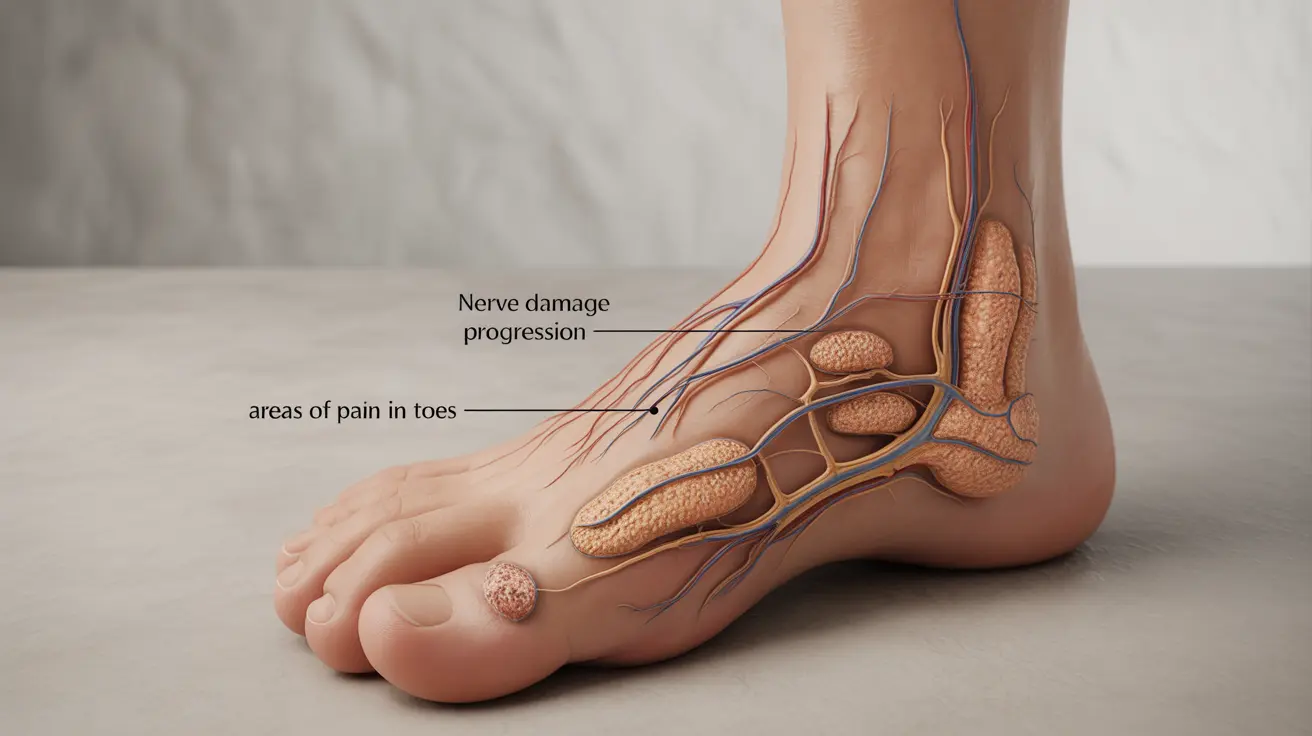Living with diabetic toe pain can significantly impact your daily life and mobility. This challenging complication of diabetes occurs when high blood sugar levels damage the nerves in your feet and toes, a condition known as diabetic neuropathy. Understanding the causes, symptoms, and management strategies is crucial for maintaining your foot health and preventing serious complications.
In this comprehensive guide, we'll explore effective ways to manage diabetic toe pain, essential preventive measures, and when to seek professional medical help. Whether you're newly diagnosed or looking for better ways to handle your symptoms, this information will help you take control of your foot health.
Understanding the Connection Between Diabetes and Toe Pain
Diabetic toe pain typically develops as a result of prolonged exposure to high blood sugar levels, which can damage nerve fibers throughout your body, particularly in your feet and toes. This nerve damage can cause various sensations, from tingling and numbness to sharp, burning pain.
The condition often progresses gradually, starting with mild discomfort and potentially developing into more severe symptoms if left unmanaged. Understanding this progression is vital for early intervention and proper care.
Common Symptoms and Warning Signs
Recognizing the early signs of diabetic toe pain can help you take prompt action. Common symptoms include:
- Burning or shooting pain in the toes
- Numbness or tingling sensations
- Increased sensitivity to touch
- Difficulty feeling temperature changes
- Balance problems due to reduced sensation
- Weakness in the feet and toes
Effective Management Strategies
Lifestyle Modifications
Making certain lifestyle changes can significantly impact the severity of your diabetic toe pain:
- Regular, gentle exercise to improve circulation
- Maintaining healthy blood sugar levels
- Following a balanced, diabetes-friendly diet
- Quitting smoking to improve blood flow
- Limiting alcohol consumption
Daily Foot Care Routine
Establishing a proper foot care routine is essential for managing diabetic toe pain:
- Daily foot inspection for cuts, blisters, or sores
- Gentle washing with warm (not hot) water
- Thorough drying, especially between toes
- Regular moisturizing (avoid between toes)
- Wearing properly fitting, supportive shoes
- Using diabetic socks for better circulation
Medical Treatment Options
Medications
Several medication options can help manage diabetic toe pain:
- Anticonvulsants like gabapentin or pregabalin
- Antidepressants that target nerve pain
- Over-the-counter pain relievers
- Topical treatments and creams
Professional Care
Regular professional care is crucial for managing diabetic toe pain effectively:
- Regular check-ups with your healthcare provider
- Visits to a podiatrist for specialized foot care
- Physical therapy when recommended
- Professional nail care services
When to Seek Immediate Medical Attention
Some symptoms require prompt medical attention to prevent serious complications:
- Signs of infection (redness, warmth, swelling)
- Non-healing cuts or sores
- Severe or sudden increase in pain
- Changes in foot color or temperature
- Development of foot ulcers
Frequently Asked Questions
What causes diabetic toe pain and how is it related to nerve damage? Diabetic toe pain is caused by nerve damage (neuropathy) resulting from prolonged high blood sugar levels. This damage affects the nerves' ability to transmit signals properly, leading to pain, numbness, or tingling sensations in the toes.
How can I manage and relieve diabetic nerve pain in my toes effectively? Effective management includes maintaining stable blood sugar levels, regular exercise, proper foot care, wearing appropriate footwear, and using prescribed medications. Additionally, lifestyle modifications like quitting smoking and limiting alcohol can help reduce pain severity.
What daily foot care practices help prevent complications from diabetic toe pain? Essential daily foot care practices include inspecting feet for injuries, washing with warm water, thorough drying, moisturizing (except between toes), wearing proper footwear, and using diabetic socks. Regular professional foot checks are also important.
Which medications are commonly prescribed for diabetic nerve pain in the feet and toes? Common medications include anticonvulsants (gabapentin, pregabalin), antidepressants that target nerve pain, over-the-counter pain relievers, and topical treatments. Your healthcare provider will determine the most appropriate medication based on your specific situation.
When should I see a doctor if my diabetic toe pain gets worse or if I develop sores? Seek immediate medical attention if you notice signs of infection, non-healing wounds, sudden severe pain, changes in foot color or temperature, or the development of ulcers. Regular check-ups are essential, but these symptoms warrant urgent care.




